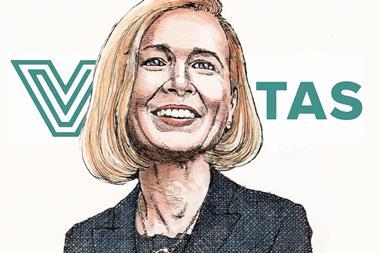UK - The Rolls-Royce Pension Fund is the latest scheme in the UK to have entered into a longevity swap - one of the largest to date, reducing its liabilities by approximately £3bn (€3.5bn).
Under the agreement, Deutsche Bank will hedge the longevity exposures of the scheme, passing on the risk to a syndicate of reinsurers.
The cost of this transaction will be borne by the pension fund and will have no material effect on the funding arrangements, according to the Rolls-Royce pension scheme.
Andrew Shilston, Rolls-Royce finance director, said: "We have made sure that as our pensioners live longer in retirement we have made proper provision for them.
"This is the latest in a series of measures we have taken to achieve greater certainty for our future funding requirements."
According to Rolls-Royce's latest annual report, the total value of its defined benefit scheme assets stood at £7.8bn in December, resulting in a surplus of around £700m. Over 80% of assets were invested in a liability driven portfolio, with a further 15% directly invested in equity.
Actuarial assumptions estimated that the company's current pensioners would live for an additional 22.4 years after turning 65, while employees currently 45 would live to an average age of 89.2.
Aon Hewitt was lead adviser of the trustees on the deal, with Linklaters offering legal advice and Mercer advised the fund on the investment implications of the transaction, including the interaction with the existing liability hedging arrangements and the overall impact on the plan's risk position.
Martin Bird, managing principal at Aon Hewitt, said: "The Rolls-Royce Trustees entered into the swap to further enhance the security of all the members' benefits.
"We worked closely with the Trustees to decide that this was the right approach for them to take and also that the swap was structured in a way that offered the best possible terms on price, security and other key longevity hedge features."
The longevity swap agreed by the trustees of the Rolls-Royce pension scheme follows a series of similar agreements signed by UK pension plans over the last twelve months.
In August this year, the pension plan for broadcaster ITV committed to one of the UK's largest longevity swaps, with the deal worth approximately £1.7bn (€1.9bn).
The third quarter of 2011 saw over £2bn of risk transfer deals completed, comprising buy-ins, buyouts and longevity swaps, according to a report by the consultancy Hymans Robertson.
The research suggests that 2011 will be a record year for pension scheme risk transfer activity with deals potentially topping £9bn of UK pension scheme liabilities during 2011 alone, as a series of significant pension scheme risk transfer deals are expected to close during the current quarter.
James Mullins, partner and head of buyout solutions at Hymans Robertson, said pension schemes were increasingly viewing buy-in deals simply as an investment strategy decision, and one that looks particularly attractive in the current market.
"Many pension schemes are reviewing their government gilt holdings, which provide quite a good match for pensioner liabilities, given the option to exchange some of their government gilts for a buy-in policy, providing a near perfect match for pensioner liabilities at a potentially lower cost", he said. "This pricing dynamic is one of the few positives for UK pension schemes following the market turmoil since the summer of 2011."
According to Mullins, 2012 will be as buoyant as 2011 for the pensions risk transfer market and providers will continue to ramp up their efforts to meet this demand which is likely to see insurance companies as well as banks take on up to £50bn of pension scheme liabilities before the end of 2012.
The reinsurance of longevity risk is also increasingly becoming an issue, with US company Prudential Retirement earlier this month agreeing a £450m reinsurance deal with Rothesay Life, marking the second such transaction by the Goldman Sachs subsidiary this year.












No comments yet